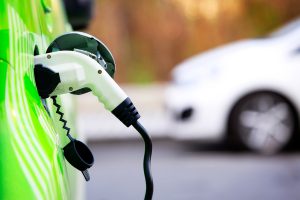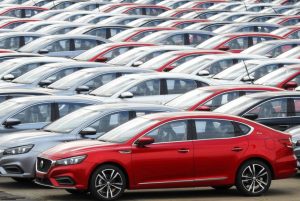
Electric vehicles (EVs) have moved from being a niche innovation to a central part of the automotive industry, with more and more governments, manufacturers, and consumers embracing them. These vehicles, which rely on electricity as a fuel source rather than traditional gasoline or diesel, are quickly becoming a symbol of sustainability, innovation, and cleaner mobility. This article will delve into the growth, technological advancements, regulatory frameworks, key manufacturers, environmental impact, and future trends surrounding EVs, highlighting their growing significance in shaping the future of transportation.
Introduction to Electric Vehicles (EVs)

Electric vehicles are cars that use electric motors powered by energy stored in batteries. Unlike traditional vehicles that rely on internal combustion engines (ICE), EVs are driven by electric propulsion. Over the last decade, EVs have become more popular due to growing environmental concerns, higher fuel prices, and innovations in battery technology.
EVs offer significant advantages over conventional vehicles, including zero tailpipe emissions, lower operating costs, and quieter operation. They represent a pivotal shift in how society thinks about transportation, energy consumption, and sustainability.
As of 2024, electric vehicle sales worldwide are projected to exceed 15 million units, with global EV stock hitting over 60 million vehicles by the end of the decade. As the world moves towards a greener future, EVs will play an essential role in reducing the environmental impact of transportation, which accounts for a significant portion of global carbon emissions.
Market Growth and Trends
Global Demand and Projections
The electric vehicle market has experienced exponential growth in recent years. According to the International Energy Agency (IEA), EV sales were up by 55% in 2023, setting a new record. Experts predict that by 2030, EVs could account for as much as 30% of global vehicle sales.
China, the world’s largest automotive market, remains the leader in EV adoption, accounting for nearly 50% of global EV sales. This surge in adoption is driven by strong government incentives, heavy investment in EV infrastructure, and increased consumer demand for green alternatives to fossil fuel-powered cars. In Europe, countries like Norway, the Netherlands, and Germany have implemented policies that encourage EV adoption, including tax breaks and EV-friendly regulations.
Key Drivers of EV Adoption
Several factors contribute to the growing adoption of EVs:
Government Policies:
Many governments are introducing subsidies, rebates, and tax incentives for EV buyers. For instance, the Inflation Reduction Act in the U.S. provides up to $7,500 in tax credits for new EV purchases. In Europe, the EU Green Deal aims to phase out new fossil fuel vehicle sales by 2035.
Consumer Awareness:
Rising awareness about climate change and pollution has made consumers more conscious of their environmental impact. EVs, which emit zero tailpipe emissions, appeal to those looking to reduce their carbon footprint.
Technological Advancements:
Significant improvements in battery technology have made EVs more affordable, longer-lasting, and capable of longer ranges. Faster charging infrastructure is also being built worldwide, addressing one of the most significant concerns around EVs: range anxiety.
Technological Advancements in EVs

Battery Innovations
The heart of any electric vehicle is its battery, and in recent years, advancements in battery technology have been pivotal in making EVs more practical and affordable. Lithium-ion batteries dominate the market, but companies are exploring new materials and designs to enhance energy density and safety.
One of the most promising developments is the solid-state battery, which could replace the traditional liquid-based electrolytes with solid materials. Solid-state batteries are expected to provide higher energy density, faster charging times, and improved safety. Companies like Quantum Scape and Solid Power are leading research in this area, with some prototypes expected to hit the market in the next few years.
Charging Infrastructure
As the adoption of electric vehicles grows, the need for robust charging infrastructure has become more apparent. Fast-charging networks have expanded, making it easier for drivers to charge their EVs during long journeys. The U.S. now has over 50,000 charging stations, with more being built in urban areas and along major highways.
Innovative charging solutions, like wireless charging and superfast charging stations, are also being tested, reducing charging times to just a few minutes, making EVs as convenient as traditional vehicles.
Autonomous EVs
The future of electric vehicles also includes the integration of autonomous driving technologies. Companies like Tesla, Waymo, and Rivian are working on self-driving EVs, which could revolutionize the way we travel. By combining electric propulsion with autonomous systems, these vehicles promise to offer safer, more efficient, and environmentally friendly transportation.
Government Regulations and Incentives
Governments across the globe are offering various incentives to encourage EV adoption. These policies range from direct subsidies to infrastructure investments and stricter emissions regulations.
Emissions Standards and Bans on ICE Vehicles
The European Union is leading the charge in emissions standards. The EU has set an ambitious target to phase out all internal combustion engine (ICE) vehicles by 2035, a move that is expected to significantly boost EV adoption. In California, the state has already set a target to ensure that 100% of new car sales are zero-emission by 2035.
Governments in several countries are also implementing regulations to improve air quality by reducing emissions. These measures include penalties for high-emission vehicles and tax incentives for those who switch to electric cars.
Financial Incentives
To make EVs more accessible, governments worldwide are offering tax credits, rebates, and subsidies. In the U.S., the Inflation Reduction Act provides rebates of up to $7,500 for new EVs, helping to reduce the purchase price. In China, there are various subsidies for both consumers and manufacturers, which have helped make electric cars more affordable.
Major EV Manufacturers and Models

Tesla
Tesla is by far the most well-known EV manufacturer in the world, and its vehicles have become synonymous with electric mobility. Tesla’s Model 3 and Model Y are among the best-selling EVs globally, offering a blend of performance, range, and affordability. Tesla’s highly anticipated Cybertruck promises to disrupt the electric pickup market with its futuristic design and impressive capabilities.
Tesla has also made significant strides in autonomous driving technology, with its Full Self-Driving (FSD) package. Tesla’s vision of a world of self-driving EVs could revolutionize transportation in the coming years.
Rivian
Rivian, an electric vehicle startup, is making waves in the electric truck and SUV market. The company’s R1T electric pickup truck and R1S SUV have garnered attention for their rugged capabilities and off-road performance. Rivian has also secured investment from major players like Amazon and Ford, who are helping the company scale its operations.
Ford and General Motors
Ford and GM are two American automakers that are heavily investing in the electric vehicle market. Ford’s Mustang Mach-E, an electric SUV, has received high praise for its performance and design. Meanwhile, GM has introduced the Chevy Silverado EV, a fully electric pickup truck that competes directly with Ford’s F-150 Lightning.
Environmental and Social Impact of EVs
Reducing Carbon Emissions
One of the most significant advantages of electric vehicles is their zero emissions. As countries strive to meet their climate goals, EVs offer a solution to reduce the carbon footprint of the transportation sector, which is one of the largest contributors to global greenhouse gas emissions.
A study by the European Environment Agency shows that EVs produce far fewer emissions over their lifetime than traditional vehicles, even when accounting for the emissions from electricity generation.
Job Creation
The rise of electric vehicles has also created new jobs in various sectors, from battery manufacturing to charging infrastructure development. According to the International Labour Organization (ILO), the transition to electric mobility could create millions of jobs in green industries, including renewable energy, battery recycling, and electric vehicle maintenance.
Challenges Facing EV Adoption
Despite the many benefits, there are several challenges hindering the widespread adoption of electric vehicles:
- High Initial Costs: EVs still tend to be more expensive than traditional vehicles, although the price gap is narrowing as battery costs fall.
- Battery Supply Chain: The demand for raw materials, such as lithium, cobalt, and nickel, is expected to rise significantly. Securing sustainable sources of these materials is crucial for the continued growth of the EV industry.
- Charging Infrastructure: While charging networks are growing, range anxiety—the fear of running out of battery power before reaching a charging station—remains a concern, especially in rural or remote areas.
Future Trends in Electric Vehicles

Battery Technology
Advancements in solid-state and sodium-ion batteries are expected to improve energy density, charging speed, and safety. This could make EVs even more affordable and convenient for consumers.
Fully Autonomous EVs
The integration of self-driving technology with EVs could lead to fully autonomous fleets that will reshape urban transportation. Companies like Waymo are already testing autonomous electric taxis, which could reduce traffic, improve safety, and lower carbon emissions.
Vehicle-to-Grid (V2G) Technology
In the future, EVs could become part of the smart grid. With V2G technology, EVs can return energy to the grid, helping to balance electricity demand during peak times.
Conclusion:
Electric vehicles represent the future of sustainable transportation. With continued advancements in technology, government support, and consumer demand, EVs will play a central role in reducing carbon emissions, improving air quality, and promoting cleaner energy sources.
Though challenges remain, the rapid growth of EV adoption, along with increased investment in infrastructure and innovation, means that the shift toward electric mobility is already underway. The road ahead may be paved with green energy and clean air, and electric vehicles will undoubtedly be a key driver in this transformation.










